Graph between applied force and force of friction
Friction of Class 8
FRICTION: CAUSE OF MOTION
- Part OA of the curve represents static friction (Fs). Its value increases linearly with the applied force
- At point A the static friction is maximum. This represent limiting friction (F1).
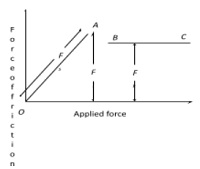
- Beyond A, the force of friction is seen to decrease slightly. The portion BC of the curve represents the kinetic friction (Fk) .
- As the portion BC of the curve is parallel to x-axis therefore kinetic friction does not change with the applied force, it remains constant, whatever be the applied force.
FRICTION: CAUSE OF MOTION
It is a general misconception that friction always opposes the motion. No doubt friction opposes the motion of a moving body but in many cases it is also the cause of motion.
|
|
It is friction which enables us to walk |
(1) While moving, a person or vehicle pushes the ground backwards (action) and the rough surface of ground reacts and exerts a forward force due to friction which causes the motion. If there had been no friction there will be slipping and no motion.
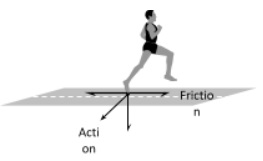
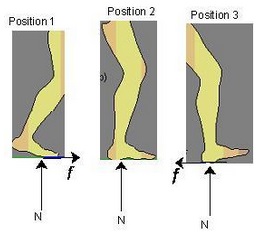
In position 1, friction acts on the leg if the forward direction which is the driving force for walking.
In postion 2, no friction force acts on the leg.
In position 3, friction acts on the leg if the backward direction which is the deaccelerating force for stop.
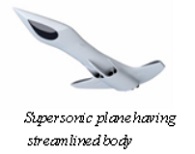
(2) During cycling, the rear wheel moves by the force communicated to it by pedalling while front wheel moves by itself. So, when pedalling a bicycle, the force exerted by rear wheel on ground makes force of friction act on it in the forward direction (like walking). Front wheel moving by itself experience force of friction in backward direction (like rolling of a ball). However, if pedalling is stopped both wheels move by themselves and so experience force of friction in backward direction.
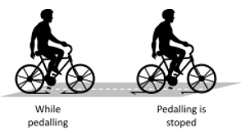
(3) If a body is placed in a vehicle which is accelerating, the force of friction is the cause of motion of the body along with the vehicle (i.e., the body will remain at rest in the accelerating vehicle until ma < μs<mg). If there had been no friction between body and vehicle, the body will not move along with the vehicle.

From these examples it is clear that without friction motion cannot be started, stopped or transferred from one body to the other.
|
|
Friction produces Heat (rubbing of surfaces leads to evolution of heat). |
Friction due to liquid and gases
When a solid moves in a liquid or gas, the surface of the solid experiences friction. The frictional force exerted by fluids is also called as drag.
It is established that fsolid >fliquid > fgas
The shape of the body around which fluid (liquid or gas) can easily flow, offering minimum friction is called as streamlined flow.
WAYS TO REDUCE FRICTION:
Streamlined bodies
The shape of a body around which a fluid (liquid or gas) can easily flow, offering minimum friction, is called streamlined shape.
e.g. Aeroplane, Submarine, Rocket, fish etc.
- Polishing – making the surface smooth.
- Wheels – due to rolling friction is very less.
- Lubricants – makes the surface smooth.
- By proper selection of material.
- Ball Bearing – It has got rolling balls due to which there is rolling friction.
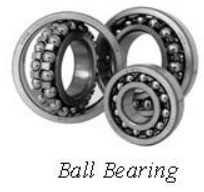
- Air Cushion – By separating the land by air cushion the hovercraft can travel over rough land, swamp or sea. Air provides the least friction.
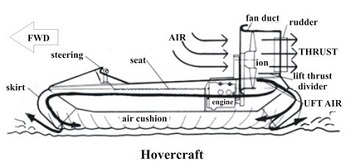
Also we can increase friction by throwing some sand on slippery ground. In the manufacturing of tyres, synthetic rubber is preferred because its coefficient of friction with the road is larger.
.png)









